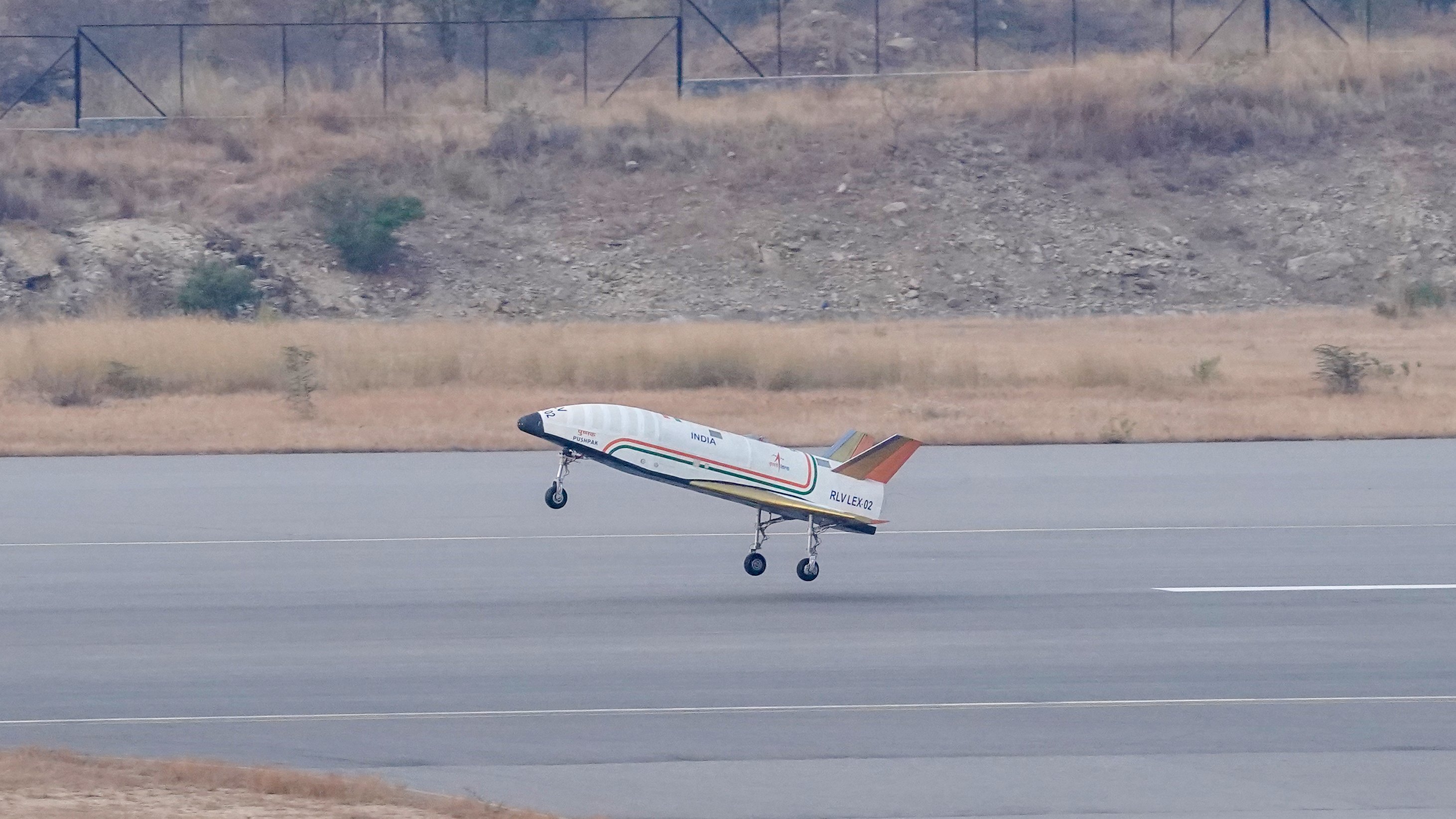SOURCE: AFI

The Indian Space Research Organisation (ISRO) is facing a hurdle in its pursuit of reusable launch vehicle (RLV) technology. While weather conditions permitting, they aim to conduct a crucial experiment this month in Challakere, Karnataka. However, technical issues with a Chinook helicopter are causing delays for a separate integrated air-drop test (IADT) of simulated Gaganyaan crew modules at Sriharikota.
This upcoming experiment focuses on the RLV-LEX series, specifically the third iteration – RLV-LEX-03. Following the successful completion of the RLV-LEX-02 landing experiment on March 22nd, 2024, RLV-LEX-03 aims to push the boundaries further, refining the vehicle’s performance, guidance systems, and landing capabilities.
“We’re simply waiting on the weather,” commented S Unnikrishnan Nair, director of the Vikram Sarabhai Space Centre (VSSC). “The helicopter is ready, but weather conditions haven’t been ideal. Forecasts predict improvement by the 14th, and if that holds true, we could conduct the experiment next week. This will be the final landing experiment before we attempt orbital re-entry.”
Compared to its predecessor, RLV-LEX-03 will introduce a higher degree of difficulty. “We’ll be deliberately introducing a cross-range error of around 500 meters, compared to the 150 meters tested during RLV-LEX-02,” explained Nair. “Additionally, the velocity azimuth relative to the runway center will be adjusted to 2 degrees, deviating from the previous mission’s 0-degree alignment.”
The successful completion of the RLV-LEX series will be a significant milestone for ISRO’s reusable launch vehicle program. This technology has the potential to revolutionize space missions by enabling the reuse of launch vehicles, ultimately reducing mission costs.